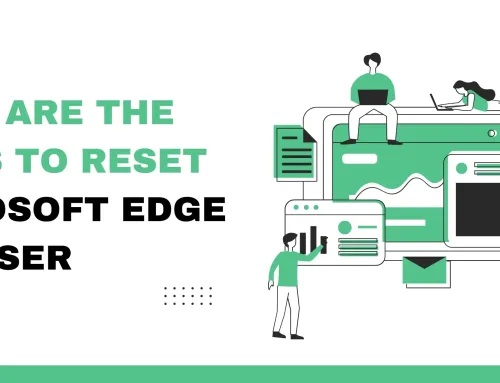In today’s technologically advanced world, implementing design thinking proves pivotal in unleashing an individual’s potential creativity while driving innovation forward instantly. Whether you are an entrepreneur or business professional, adopting design thinking today revolutionizes problem-solving.
Design thinking provides valuable toolkits for tackling complicated difficulties while efficiently building rapport among stakeholders. Empathy with end-users (understanding their needs), redefining issues, identifying solutions (prototyping them), and honing one’s talents help foster groundbreaking ideas.
This article highlights eight ways design thinking can benefit you. It can nurture your creativity, sharpen your critical thinking skills, and amplify your collaboration skills. So without further ado, let’s start.
1. Enhances Problem-Solving Skills
Enhancing problem-solving skills remains the most noteworthy benefit of embracing design thinking. This approach fosters empathy when attempting to solve issues holistically—going far beyond a band-aid solution. User research, ideation, and prototyping are some techniques used in the process, equipping individuals with the tools necessary for solving complex obstacles innovatively.
By developing design thinking principles and practices in intensive training environments, individuals develop an in-depth comprehension of daily challenges, resulting in creative strategies propelling them forward.
Hence, you can acquire a certificate for design thinking from a credible university to demonstrate your commitment to continuous learning and professional development. A design thinking certificate will give you experience in solving crucial problems, thus improving your problem-solving skills.
2. Fosters Innovation and Creativity
The contemporary business environment highly prizes creativity and innovation skills—a calling answered by design thinking training programs. These programs provide structured frameworks to ignite these skills within individuals working in organizations or entrepreneurs driving companies forward today.
Techniques such as brainstorming or ideation sessions break the conventional patterns of thinking. These techniques can bring forth various unanticipated ideas that can lead to innovative solutions that would remain unexplored otherwise.
3. Cultivates Empathy and User-Centricity
Understanding the needs and desires of users is crucial for creating products and services that truly resonate with them. Design thinking strongly emphasizes empathy and user-centricity, enabling you to gain deep insights into the people you are designing for.
By immersing yourself in the user’s world, conducting interviews, and observing the behaviors, you can develop a profound understanding of their motivations, pain points, and aspirations. This empathetic approach allows you to design solutions that address real needs and provide meaningful value to users. Thus, design thinking training develops more empathy in you and assists you in generating human-centered solutions.
4. Encourages Collaboration and Iteration
Another way design thinking training can help you is by fostering collaboration with other team members in solving complicated problems. Design thinking training helps everyone have various perspectives, resulting in an inclusive workplace where all ideas are valued. The activities included in design training educational programs, such as brainstorming sessions, co-creation workshops, and prototyping, increase teamwork in discovering new solutions.
Design thinking training also improves iteration, which may be defined as a continuous process of refining solutions, designs, and products. The iterative approach allows individuals to learn from mistakes by making changes to their products or design.
5. Enhancing Communication and Presentation Skills
Strong communication and presentation skills are necessary to convey your ideas and share insights. Hence, design thinking training teaches you how to communicate effectively with fellow team members, stakeholders, clients, and customers.
These skills also help to understand and connect with other individuals on an emotional and personal level. It also leads to explaining complex concepts effectively, which assists in solving problems. In other words, design thinking training will enhance your confidence in your communication skills, leading to greater reach and professional success.
6. Developing Adaptability and Resilience
Adaptability and resilience are critical for personal and professional success in today’s fast-paced environment. Individuals benefit from design thinking training since it increases adaptation and resilience. It gives them the mindset and resources they need to flourish in dynamic circumstances by teaching them to accept ambiguity and navigate uncertainty.
Because design thinking is iterative, it encourages people to view failure as an opportunity for learning and growth. It fosters a resilient mindset in which a person views setbacks as stepping stones to invention. As a result, design thinking training can increase your adaptability and resilience, allowing you to deal with obstacles, adjust to new conditions, and seize more chances.
7. Encouraging a Culture of Continuous Improvement
Within organizations, design thinking fosters a culture of relentless improvement. It aids in understanding the importance of feedback and iteration, which develop a mindset that values learning from mistakes and aiming for ongoing improvement. This strategy fosters an environment where people are encouraged to experiment, take risks, and solicit feedback from consumers and stakeholders.
Thus, design thinking training aids individuals in building a growth mentality, which helps them identify chances for development and innovation. Seeking continuous improvement can positively impact your personal and professional growth, ultimately contributing to success.
8. Promoting Ethical and Sustainable Practices
In recent times, the significance of ethical concerns and ecological sustainability has increased in all organizations. Design thinking provides a framework for incorporating ethical and sustainable concepts into decision-making. Thus, design thinking training encourages individuals to explore the broader consequences of societal effects, environmental sustainability, and ethical considerations.
Similarly, empathy mapping and stakeholder analysis allow individuals to develop an understanding of diverse stakeholders’ requirements, demands, and values. It assists individuals in designing ethical and sustainable solutions while fulfilling the problems. Thus, we can say that design thinking training helps individuals make responsible decisions that benefit society and the environment.
Conclusion
Design thinking training can help you improve your problem-solving skills, develop innovation and creativity, cultivate empathy and user-centricity, and encourage collaboration and iteration. Furthermore, it can enhance communication and presentation skills, foster adaptation, resilience, and a culture of continual development and ethical and sustainable practices.
Design thinking is a significant skill set that can favorably affect personal growth and professional achievement, thereby contributing to developing a better future. Adopting design thinking ideas and approaches is, thus, a worthwhile investment for individuals and organizations seeking to prosper in an increasingly complicated and fast-changing world.










